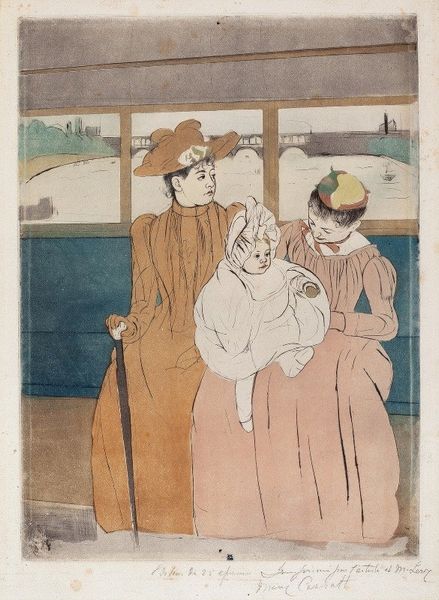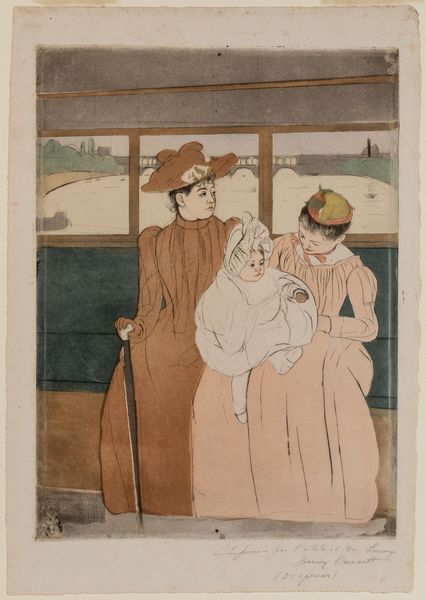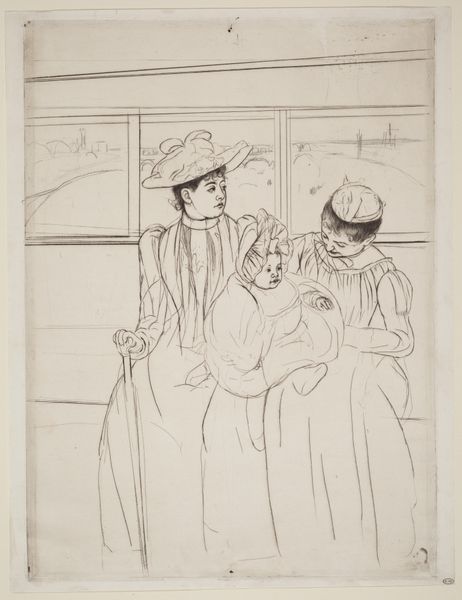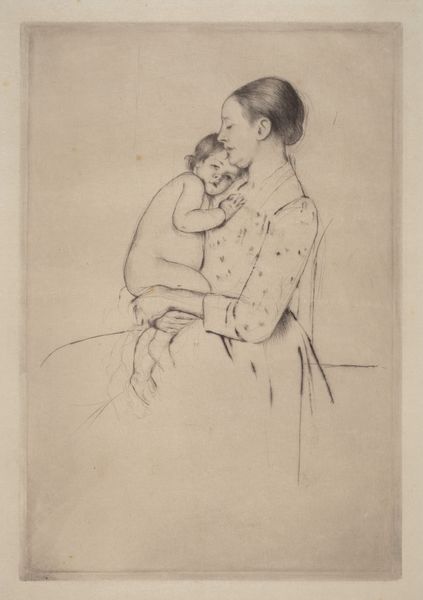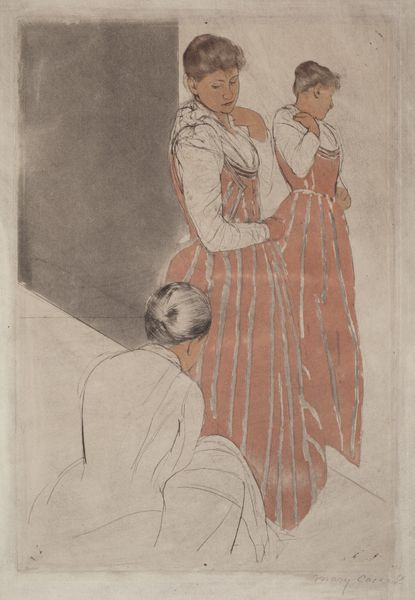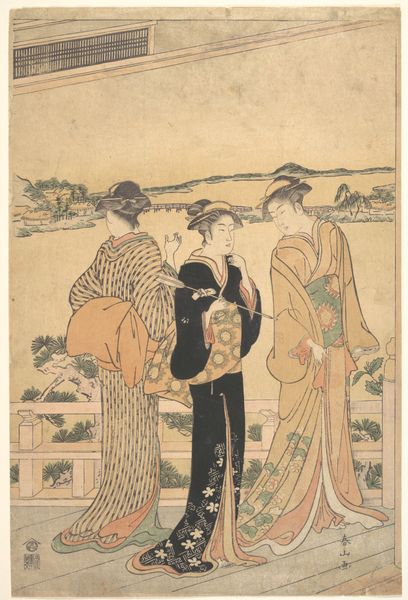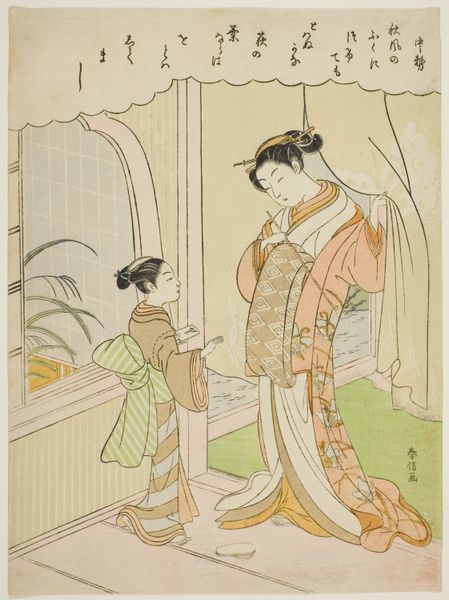
print, watercolor
#
portrait
#
water colours
# print
#
impressionism
#
figuration
#
watercolor
#
underpainting
#
genre-painting
Dimensions: plate: 36.51 × 26.67 cm (14 3/8 × 10 1/2 in.)
Copyright: National Gallery of Art: CC0 1.0
Curator: Mary Cassatt's "In the Omnibus," created between 1890 and 1891, presents a genre scene rendered in delicate watercolor and printmaking techniques. What captures your eye most about this particular piece? Editor: It’s that little island of white in the center – the baby. It's like a spotlight amidst a muted, brownish scene. Immediately, the eye goes to that vulnerability, that innocent round face looking straight out. It also reminds me of a dream sequence. Curator: That's an astute observation. The child becomes a focal point, an emblem of innocence within the transient, public sphere of the omnibus. And you mention "dream sequence"—Cassatt's Impressionistic style often does evoke that ephemeral, dreamlike quality through her delicate application of color and light. The figures almost seem suspended in a moment of quiet contemplation. Looking closely, the mother's gaze doesn’t meet ours, it is subtly averted. Does this add a narrative mystery for you? Editor: Absolutely, I love that it resists easy storytelling. This isn't a grand, symbolic gesture; it feels utterly…human. We’re peeking into a fleeting moment on public transport. There's a definite sense of detachment between the figures as if lost in their thoughts. The one holding the baby isn't focused on it at all. There's no conventional tenderness, and in this period that's an unconventional portrayal of women, particularly motherhood. Curator: That very "ordinariness" is radical, wouldn't you say? Cassatt defied conventions by portraying women in everyday settings, rejecting the idealized roles dictated by the patriarchy. Note too the absence of men – another bold compositional decision that directs our attention solely to the world of women and their quiet interactions. What of that separation of gazes; could that convey social isolation or even the beginnings of modernity's alienated experience? Editor: Very insightful. It’s so relatable, really; existing together yet apart, lost in your own bubble even amidst the urban bustle. Curator: Ultimately, “In the Omnibus” isn’t just a visual delight; it invites us to ponder universal themes of motherhood, identity, and belonging, wrapped in the intimate language of Impressionism. Editor: For me, it’s a slice of stolen time, captured beautifully. A poignant study of modern life and inner experience.
Comments
No comments
Be the first to comment and join the conversation on the ultimate creative platform.
